Sony Vaio T11 stands tall on its own. However, the appeal within the wider demographic will be rather limited, considering it is targeted at a niche within a niche. The 11-inch display will be an interesting option for those who want the extra portability on offer, and don�t mind the smaller display. It offers stable performance throughout, with good battery life. For a little bit more money though, you get the bigger display ultrabooks that also pack in a lot more power.
Build & Design
The Sony Vaio T11 is probably one of the most understated ultrabooks we have seen. There is a very elegant element about the design, without any gaudy, glossy or shiny elements around. Straight out of the box, the silver metallic finish does have more than a dollop of sophistication. The Vaio and Sony logos get the chrome treatment, helping them shine out on the brushed metal lid, without actually creating a colour conflict. Sony seems to be excelling in making subtle tweaks to the designs of their laptops.
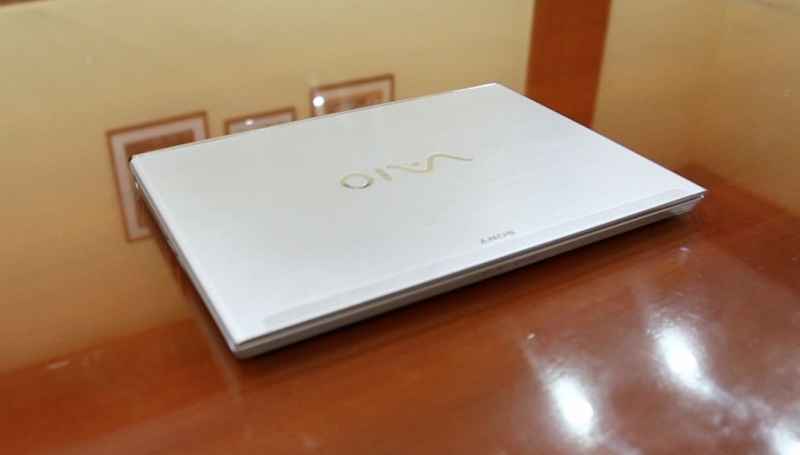 |
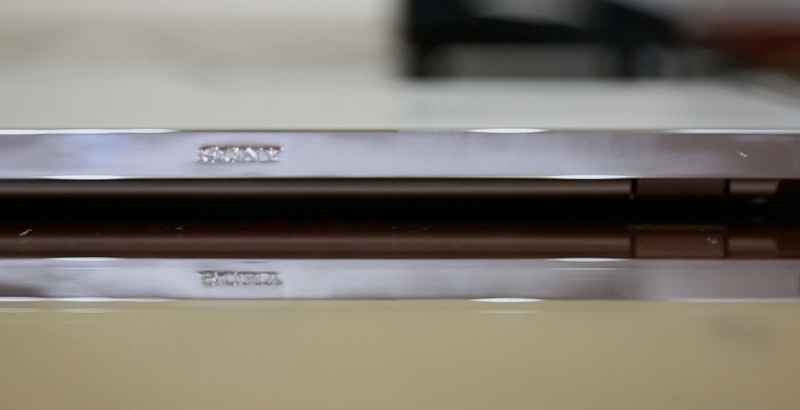 |
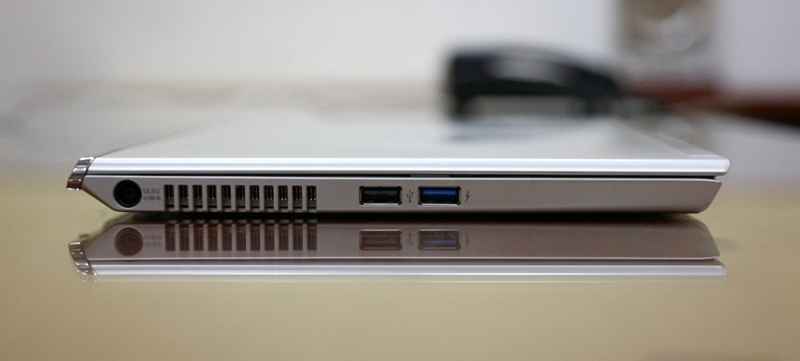 |
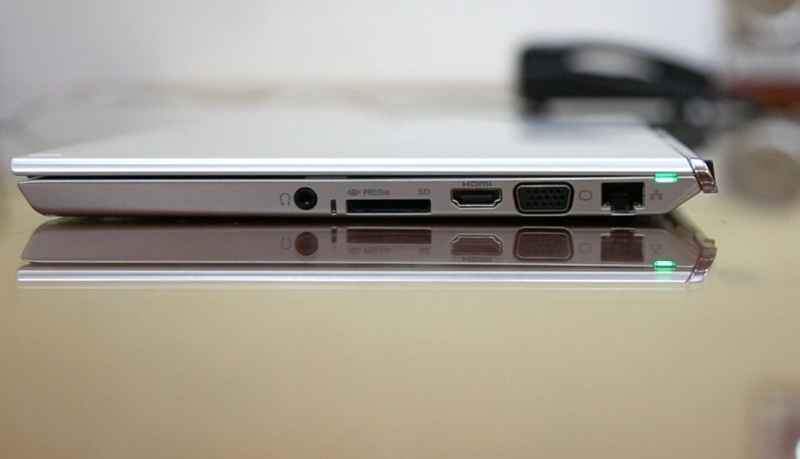 |
The Vaio E-series that we had reviewed recently had a lid that was slightly smaller on the near side, than the rest of the laptop, creating a slightly unique look. On the T-series though, it is the other way round. The length of the lid is longer than the rest of the laptop, which means there is an inward slope top down. If you look at the laptop from side on, there is a similar slope towards the rear of the machine, kind of evening the elements out in tandem.
On the right spine is the headphone and microphone jack, memory card slot, HDMI out as well as a full-fledged Ethernet port – no adapter required. On the left spine are two USB ports – one USB 3.0 and one USB 2.0, and a generous vent for cooling. On the rear of the Sony Vaio T11, essentially covering the display hinge, is a piece of very shiny chrome. While the rest of the laptop stays away from the reflective finish, we are kind of surprised to see this little strip of very shiny finish. We aren’t very sure if it is an ergonomics issue, or a nifty feature, but when you open the display, the lid pushes down on the back of the laptop, raising it up a tad bit.
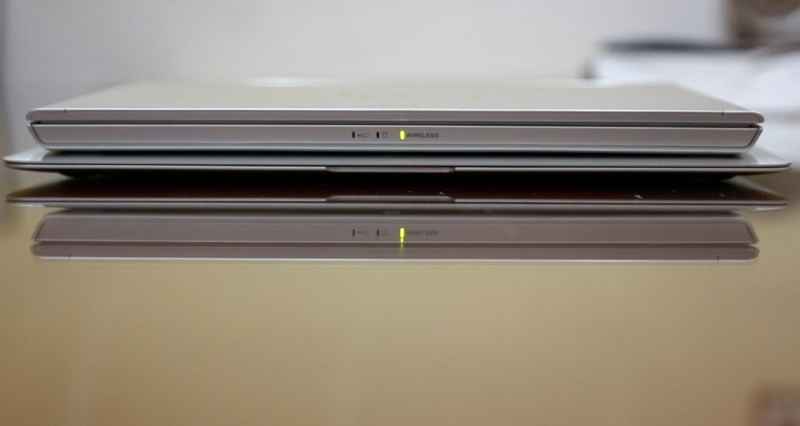 |
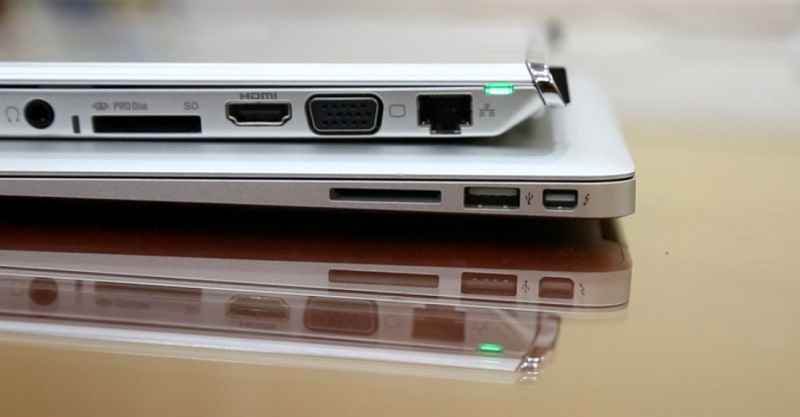 |
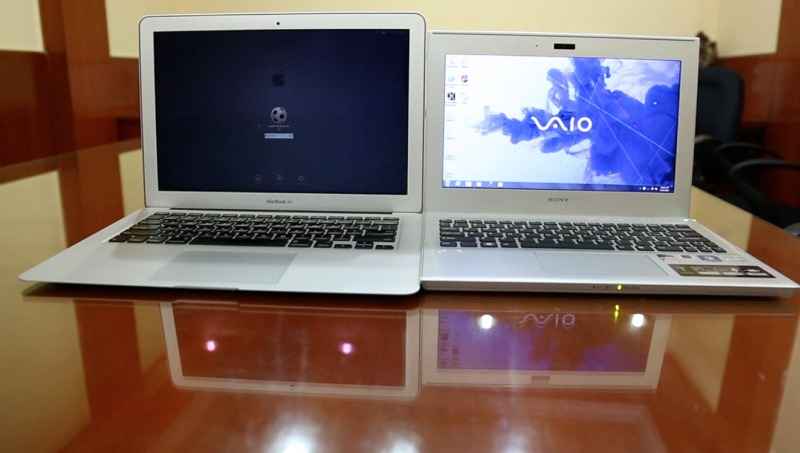 |
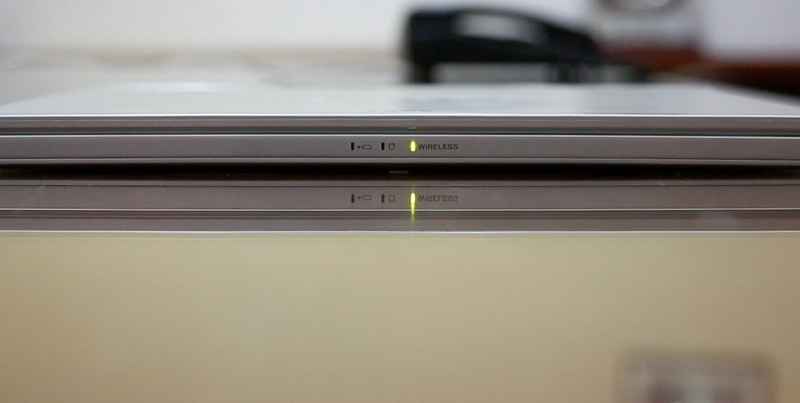 |
Open the Sony Vaio T11 up, and despite the possible limitations of an 11-inch display size, the keyboard or the area around it doesn’t look cluttered. There is no dedicated number pad, as expected, but the keyboard is pretty well spaced out. Very similar to what we see on 13-inch display size ultrabooks. Enough palmrest real estate on offer, which should help when you are typing out that long document. The touchpad sufficiently big for comfortable multi-touch gestures, but with integrated left and right click keys though. The secret is not hidden away too – the bezel around the display is quite thick, allowing for the laptop to have dimensions very close to what a 13-inch display cousin has to offer.
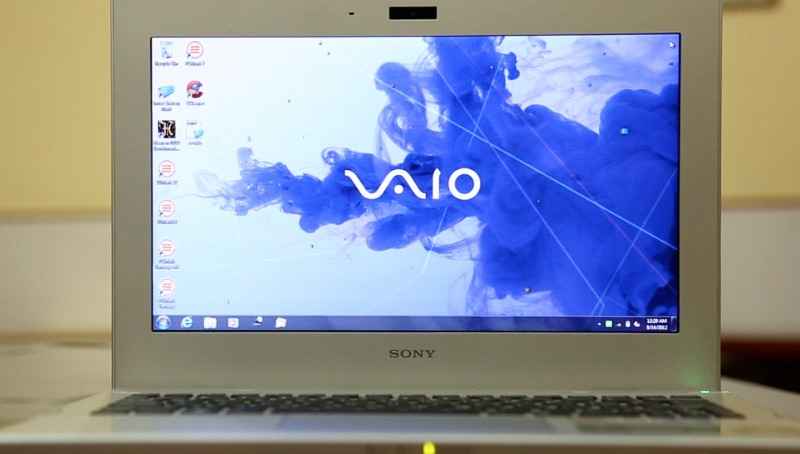 |
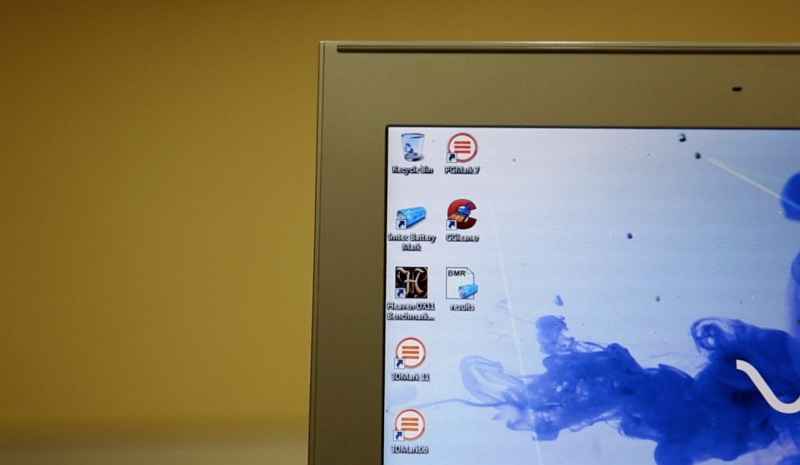 |
 |
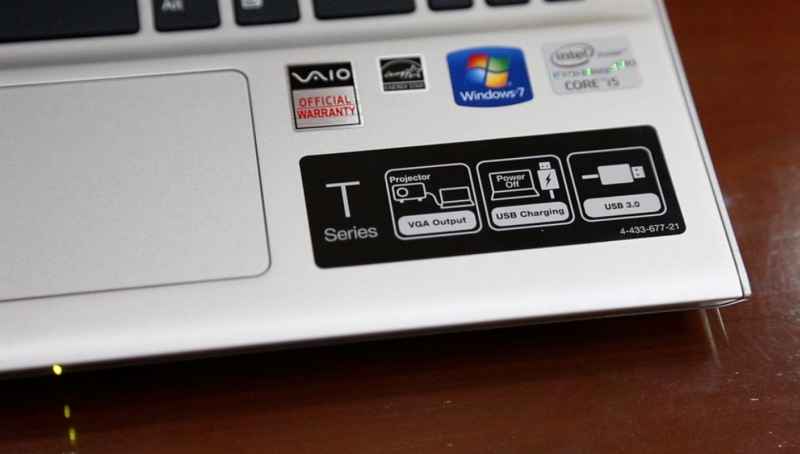 |
At 1.4kg, the Sony Vaio T11 is surprisingly not as light as it should have been. The Acer Aspire S3, with a bigger 13.3-inch display weighs 1.35kg.
The brushed metal finish looks brilliant, and there is no doubting that the Sony Vaio T11 is one of the smartest looking ultrabooks money can buy. It is an added bonus that it doesn’t cost a bomb!
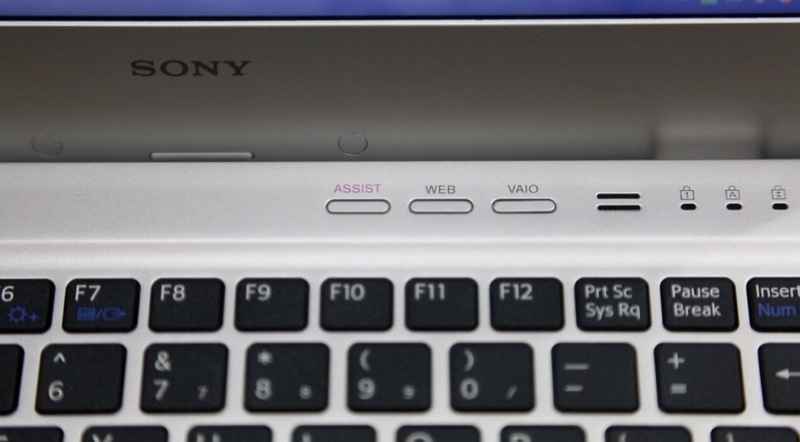 |
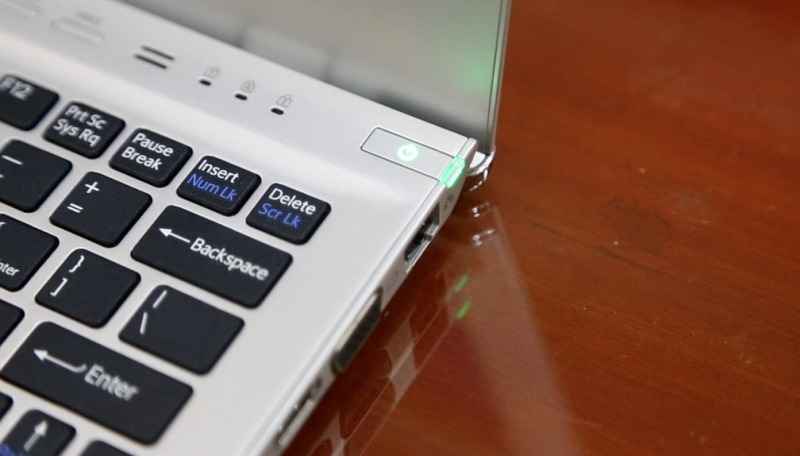 |
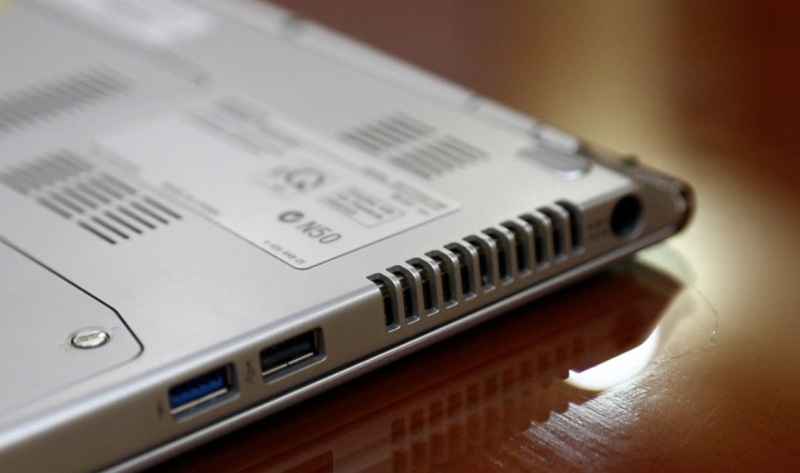 |
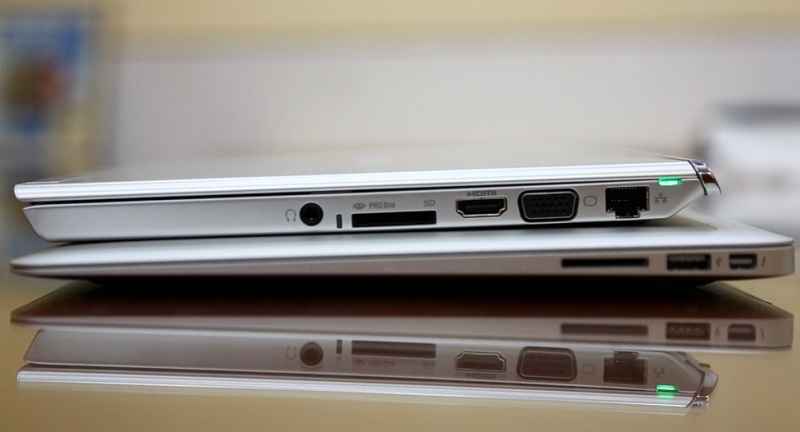 |
Features & Specifications
The Vaio T11 is powered by the same Intel Core i5-3317U that we have tested in the Samsung Series 5 and the HP Envy 4. This one clocks at 1.7GHz and Turbo Boost takes it to 2.5GHz. Yes, there is 4GB of RAM to help it along. Needless to specify, we guess, that this is the latest Ivy Bridge series!
Unlike the other two ultrabooks that we have mentioned, there is no graphics goodness on the Vaio T11 – just the Intel HD 4000 graphics to contend with.
The Sony Vaio T11’s 11.6-inch display has a resolution of 1366 x 768 pixels, which is becoming a norm as far as ultrabook displays are concerned, irrespective of display size. Interestingly, the display isn’t all matte, something that we expected would be a given on a smallish display – to make the experience more comfortable. However, we wont raise any unwanted alarms – this one isn’t as non reflective as its own bigger sibling, the E-series, but does have some reflective tendencies.
The Sony Vaio T11’s keypad, despite being well spaced out, is a disappointment. The keys just don’t have the amount of travel necessary for a quick typing session, and takes a lot of time getting used to. But we would not rate this keypad highly, considering it does not offer the optimum amount of key travel right from the outset.
Considering the smaller form factor, there is a bit of a given that there will be a reduced no of ports available. But it is actually a surprise that there is a bunch of them available on the Sony Vaio T11 – couple of USB ports, HDMI out and even a full-fledged Ethernet port. Yes, it does miss out on one, or even two more USB ports, but then again, we didn’t expect too many with this kind of a form factor.
The Vaio T comes with a 500GB hard drive as well as a 32GB flash drive for caching tasks. This seems to be becoming a trend, but unlike Samsung’s really neat utility for managing this storage option (cleaning, enabling, disabling etc.), no other manufacturer seems to be offering that, despite preloading a whole bunch of unwanted stuff on the laptop. .
Speaking of which, Sony preloads the Sony Vaio T11 with Windows 7 Home Premium (64-bit), but the amount of utilities preloaded on the machine go well beyond the stage of being funny. The comparative performance difference between a machine out of the box with Sony’s version of Windows and post uninstallation and cleanup of unwanted software is immense. Surely, if we run our tests without cleaning up the Sony laptops beforehand, the scores will be a lot worse!
Performance
While the Sony Vaio T11 bears the same processor as the one in the Samsung Series 5, the benchmark scores are a bit of a roller coaster. The Vaio scores a PC Mark Vantage score of 6532, while the Samsung Series 5 scores 7465. However, in the PC Mark 7 test, the Vaio scores 3469 while the Samsung Series 5 has to be happy with a score of 2371! The CineBench CPU score of 2.4 for the Vaio T and 2.35 for the Samsung Series 5 puts things in perspective – the starting point of both machines, no matter how different they are, is the same.
Since it doesn’t have a dedicated graphics card, the Vaio T is comparable to the Ivy Bridge rival from Acer – the Aspire S3. Both machines have very limited gaming capabilities, as the Unigene test shows – 11.7FPS for the Vaio T and 11.5FPS for the Aspire S3. The Vaio T scored very basic scores in the 3D Mark 11 test – 996 (Entry), 532 (Performance) and 179 (Extreme). If you remember reading the Aspire S3 review, you will recollect that this benchmark refused to run on that ultrabook, no matter how hard we tried!
The Sony Vaio T lasted 160 minutes from full charge to full discharge in our heavy stress battery test. This is done in High Performance mode, with everything like display timeout and dimming disabled. In real life, this will simply double, and could give very close to 5.5 hours to 6 hours, depending on factors like load, display brightness etc. this is excellent, considering the small form factor and a smaller battery than the bigger rivals boast of.
Bottom Line
The Sony Vaio T is meant for a demographic within a limited demographic that wants to buy an ultrabook. The 11-inch Vaio T option is meant for those who want ultraportability, without compromising on specs or good looks. This ultrabook does very well within the boundaries set for it. But the point is simple, at least for someone who isn’t hell bent on only buying something with an 11.6-inch display size – you can get a lot more powerful ultrabooks for around Rs. 5,000-Rs. 6,000 more than what the Vaio T costs.

